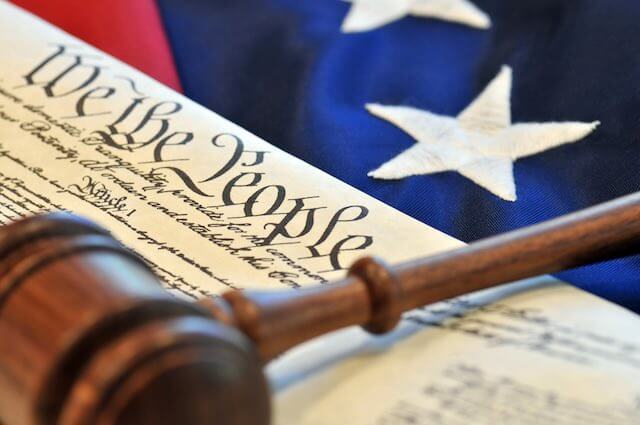If the Court’s ruling to strike down the Executive Orders that would have made it easier to fire federal employees is any indication, the law is on the side of workers.
Sort of.
It actually boils down to interpretation of the law. A President’s authority to do things such as issue Executive Orders that affect workers, as well as other matters, is dictated by Congress and the Constitution itself—otherwise known as the law. Plain and simple, a President exceeds his authority if his actions conflict with existing laws.
What is not so plain and simple in this case is the murky territory that exists within the interpretation of federal law regarding a President’s power versus employees’ Constitutional rights.
Three Orders issued by the President in May were intended to give agencies more power to terminate employees deemed poor performers and encourage them to renegotiate contracts with unions that represent government employees. The orders also narrowed the definition of “official time” that federal workers in union positions can spend on union business when they are at work.
Unions File Lawsuits
Within a month of the Orders, 17 federal employee unions filed four separate civil complaints against the President and the Office of Personnel Management, challenging the legality of the Orders and the interpretation of the President’s authority to issue them.
The motions targeted 20 provisions of the Orders, which affect federal employees, including:
- the President has no legal authority to issue the Orders pertaining to federal labor relations;
- the challenged provisions conflict with federal law that allows unions the right to bargain collectively; and
- certain provisions of the Orders violate the “Take Care Clause” of the Constitution, which imposes a duty on the President to enforce the laws of the United States, including the First Amendment right to freedom of association.
Weighing a President’s Authority vs. Workers’ Rights
Just how does a court balance a President’s statutory authority against workers’ rights?
First, the court must analyze the law that supposedly confers authority, based on the Constitution, upon the President. Next, it must assess the scope of a given Order. Then it must check for inconsistencies between existing laws and the Order itself.
The Court’s Findings
In this case, the court looked to previous case law in Youngstown Sheet & Tube Co. v. Sawyer to explain the constitutional authority granted to presidents.
The court held that the President is without authority to create directives that limit the right to bargain collectively, which Congress established (the law). In other words, most provisions of the Orders, collectively, go too far and restrict good-faith negotiation by unions and other public interests—effectively, the Orders are not in the constitutional best interest of federal employees.
The Court also found that the Orders attempted to take four categories of otherwise negotiable matters affecting employees off the bargaining table, including:
- all of the allowable subjects of bargaining;
- the ways union members can receive and use official time;
- the agencies’ procedures for handling matters relating to inadequate employee performance, performance evaluations, and performance-based bonuses; and
- the methods for conducting collective bargaining.
A specific provision struck down includes the Removal Procedures Order, which prohibits agencies from subjecting disputes about employees’ assignment ratings or performance-based bonuses/awards to grievance procedures or binding arbitration, no matter what the agency and labor organization might have agreed to. The Court held that it conflicted with federal law regarding procedures for the settlement of grievances in collective bargaining agreements.
The Court also struck down the provision that removes from the bargaining process and commits to the sole discretion of agency management how long an employee should have to improve their performance before being terminated once the employer deems their performance unacceptable.
The provisions of the Orders that stand are those that neither contribute to a reduction in allowable collective bargaining nor impede the ability of agencies and executive departments to engage in good-faith bargaining over conditions of federal employment.
Upheld provisions also include those that prohibit an agency from making any agreement that limits the agency’s discretion to remove an employee without first engaging in progressive discipline. This was not deemed to be in conflict with the scope of bargaining and the Federal Labor Relations Authority already determined that such matters are within the sole discretion of each agency.
The Court also dismissed the arguments in support of the Orders, holding that the District Court has subject matter jurisdiction because, even though most disputes concerning federal labor-management relations must be channeled through the administrative review scheme required by law, this matter is different than the disputes Congress intended the provisions to cover.
Summary
While the President has the authority to issue executive orders that carry the force of law with respect to federal labor unions, including collective bargaining, it is undisputed that no such orders can take away the right to bargain collectively. In other words, these provisions conflict with the intent of the law in ways that cannot be sustained.



